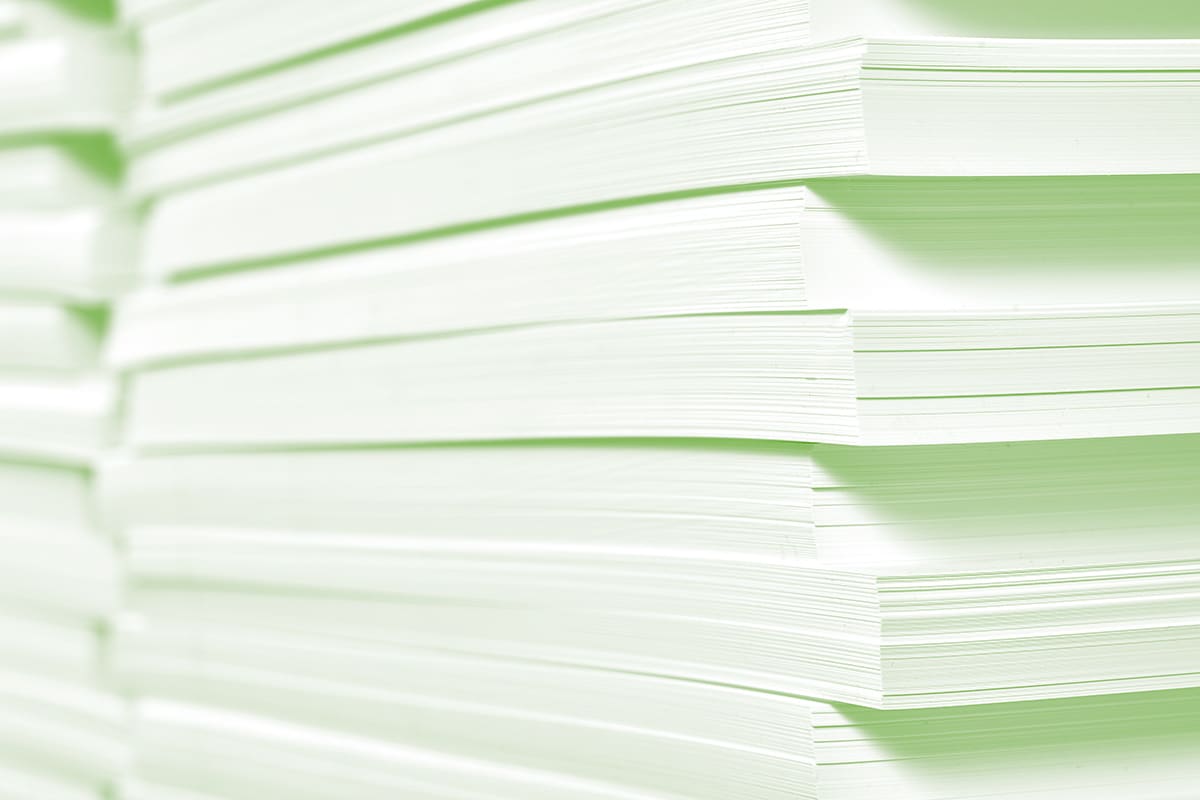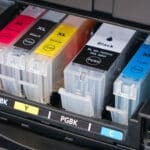
If you want to print materials for marketing purposes, create restaurant menus or meet other print requirements, green printing is the best solution!
What are the benefits of using green printing for your organization? Sustainable printing methods, for example, are more cost-effective than traditional processes. Green printing procedures also provide the same high-quality items as conventional printing. Green printing reduces waste, eliminates dangerous chemicals, and protects the environment from further damage. In the end, working with a printing firm that follows environmentally responsible practices like using recycled print paper and environmentally friendly inks may be beneficial to your business! Continue reading to learn more about how you can help conserve the environment by printing with an eco-friendly printer.
Is it harmful to the environment to print?
To begin, we must determine whether or not printing is considered a green practice! Many old-fashioned printing firms use chlorine-based bleaches for some of their processes. When these bleached papers are disposed of, harmful toxins are discharged into water, soil, and air. To give another example, as the paper decays and emits methane gas—which is 25 times more poisonous than carbon dioxide—it becomes even more toxic to humans and animals!
Many printing firms employ technologies that can emit potentially harmful amounts of ozone as a result of their harmful bleaching routines. Ozone (O3), commonly known as “ozone,” is a highly reactive and unstable kind of oxygen that may have serious health effects. In response, several print companies have implemented viable sustainable printing methods. Continue reading to learn more about green printing and how The Print Authority is leading the industry in environmentally responsible production.
What Does Green Printing Mean?
Green printing is the practice of using renewable energy sources, minimizing consumption of resources and greenhouse gases, and recycling materials. A print service may utilize recycled paper to produce its goods as an example. Continue reading to learn about green printing procedures and environmentally responsible paper handling that are preserving the world.
Green Printing Processes
Over time, printing firms have altered their production processes in order to incorporate more environmentally friendly methods. They might also limit the use of non-essential chemicals or utilize recycled materials! In addition, progressive printing businesses have switched to digital printing presses that use less power, require fewer chemicals, and produce biodegradable toner. After all, replacing press and other chemical mixtures is a smart idea if useful and ecologically beneficial replacements are available!
In the end, minimizing waste lowers expenses and makes the process more efficient and profitable.
With new, forward-thinking practices like this, printing firms are leading the charge in adapting to changing market conditions. There is still a lot more to be done when it comes to environmentally responsible printing though! In the following section, we’ll look at sustainable paper techniques.
Papermaking that Is Green and Environmentally Friendly
The benefits of recycling paper are well-known. However, it hasn’t been standard until recently. In reality, recycled printing paper is now more accessible and inexpensive than ever before. Not to mention that some modern eco-friendly papers are advertised as carbon neutral! To put it another way, this might indicate that a paper firm finances environmental initiatives that compensate for the carbon emissions produced in the manufacturing process. Renewable energy, such as wind power, is used to create other types of environmentally friendly paper.
Using tree-free paper is another unusual green printing process. Vegetable materials such as bamboo, jute, wheat, straw, or agricultural waste are used to create this one-of-a-kind paper alternative.
Whatever eco-friendly paper alternative you choose, it will print with the same quality as conventional printer paper. It’s also worth noting the proportion of post-consumer waste in any recycled paper you select. There are more alternatives than ever before on the market, including papers manufactured using 100 percent post-consumer waste.
Eco-Friendly Print On-Demand at The Print Authority
Despite being around for a long time, making the printing process more environmentally friendly has really taken off in recent years. As a result, The Print Authority has committed to being eco-friendly! Soy ink, for example, is biodegradable and provides better colors while also making it simpler to recycle paper since it is not permanent. This means you get higher-quality pictures while simultaneously assisting the environment!
We’ve also upgraded our offset printing plate system to a more environmentally friendly ‘chemistry-free’ method. We now recycle 100% of our printing plates and only nontoxic by-products are made by the plate machine with this change.
In promoting our digital department for short-run papers, we’ve had some success in assisting the environment. This is environmentally friendly on a number of fronts. First, short-run documents are typically more up to date, minimizing obsolescence. Second, digital printing uses significantly less set-up than offset printing; we have discovered that digital printing reduces waste by 10% or more. Third, because of our state-of-the-art digital printing equipment’s use of biodegradable toner and low power requirements, it is environmentally responsible.
In terms of environmental initiatives, The Print Authority has made efforts to improve eco-friendly practices in the background. For example, we got rid of superfluous paperwork that was necessary for our printing projects—we now utilize electronic purchase orders instead! We also make every effort to bundle shipments destined for the same area into fewer containers. This lowers shipping costs and the environmental effect of the shipment.
Overall, The Print Authority is pleased to provide environmentally friendly print-on-demand that exceeds client expectations while also protecting the environment.
The Green Impact of the Print Authority
Customers were dissatisfied with rivals’ printing services a decade ago, so The Print Authority understood there was a problem. What’s the issue? Some competitors provided low-cost services for big printing orders, which they stored for future distribution and then destroyed the rest of the material when it expired. These same businesses, however, charged tens of thousands of dollars in destruction fees for outdated print that needed to be updated.
Backorders at the printing firm were also a problem, owing to the higher shipping costs incurred by sending one order in many boxes. This practice wasted crucial paper, energy, and time. The Print Authority eliminated this problem. In its place, the Print Authority developed an easy-to-use website and started providing print-on-demand services instead of bulk printing and storage. Backorders were eradicated as a result, with 90% of client orders being delivered within two working days.
What was the outcome? The new technique of producing documents has saved clients over $22,000 each year on out-of-date supplies! In other words, waste is drastically reduced, and clients save thousands of dollars!
MAKE AN IMPACT
Based on collected data, the Print More, Plant More initiative certifiably replenishes the trees utilized by each customer. The program links seamlessly with Cartridge World’s Managed Print Services to allow clients to offset their paper footprint and contribute to worldwide reforestation efforts on a monthly basis.
THE FORMULA: 8,333 PAGES PRINTED = 1 TREE PLANTED
The current formula for calculating a paper footprint relative to environmental impact was developed by Tom Soder at the University of Maine about 30 years ago, and it’s considered the most widely accepted method. It was then embraced by the print/paper/forestry sector, largely through adoption by the Environmental Paper Network (EPN). The EPA, Environmental Defense Fund, and a group of over 100 other NGOs all trust and utilize this calculation.






